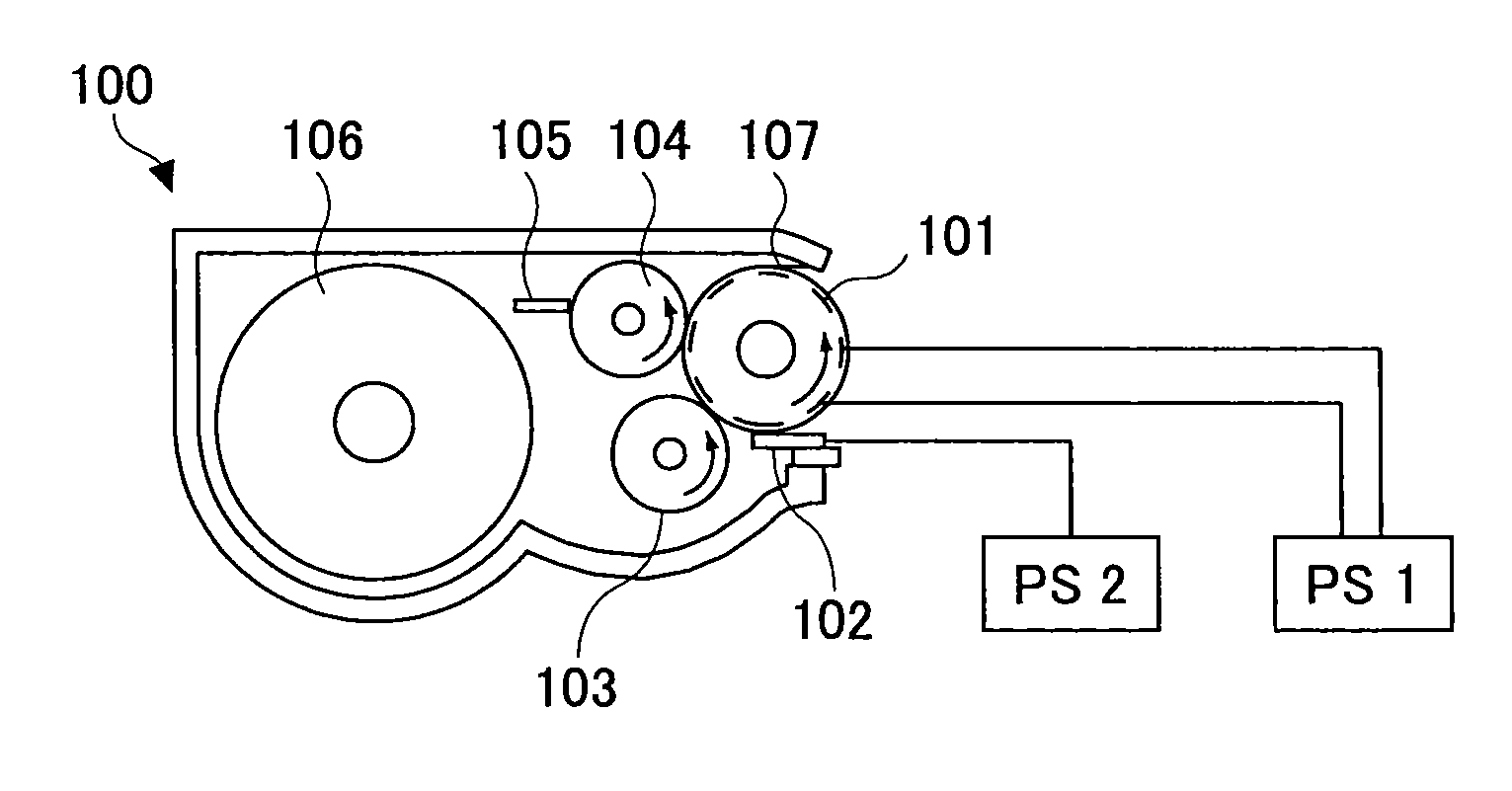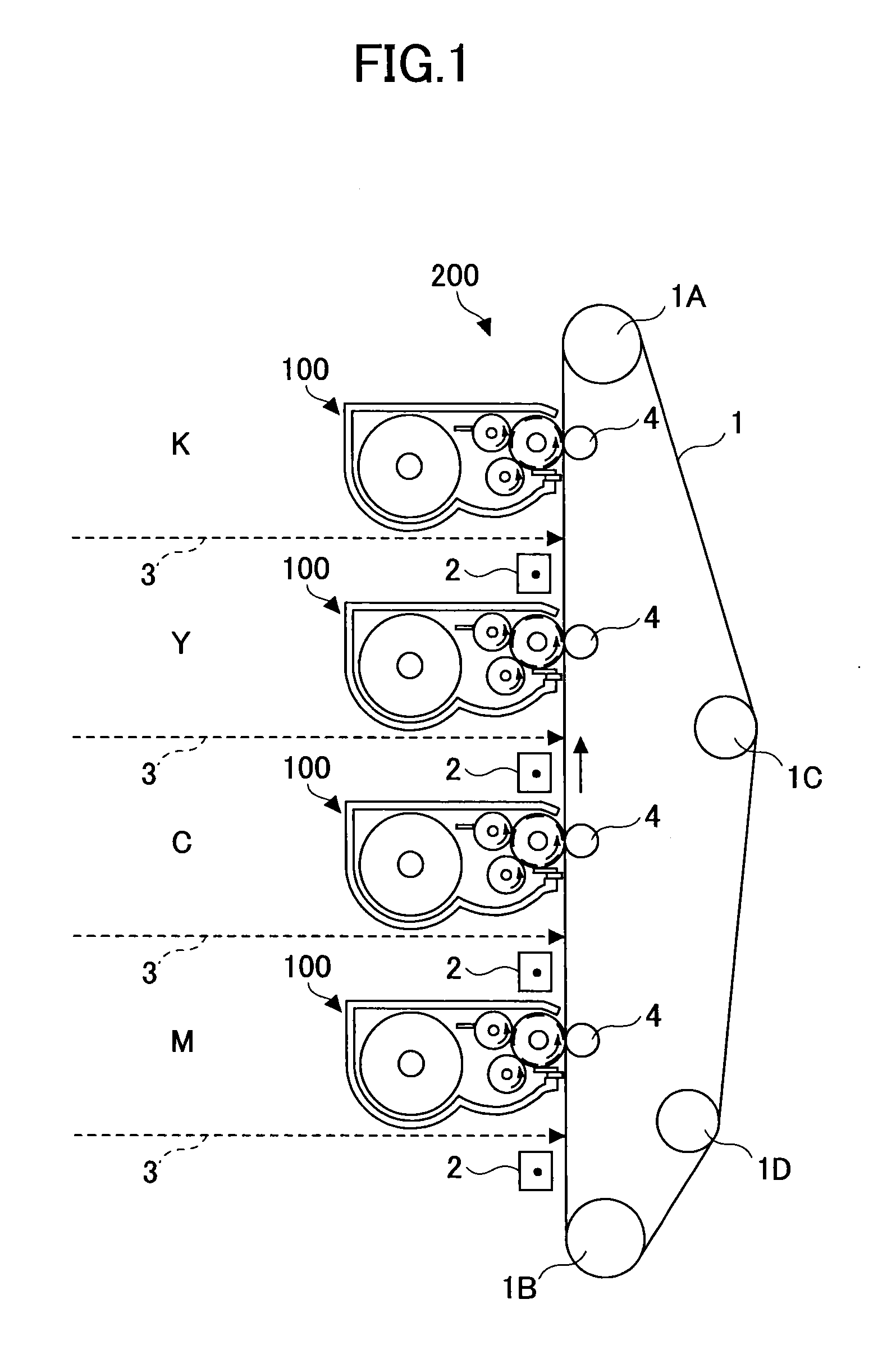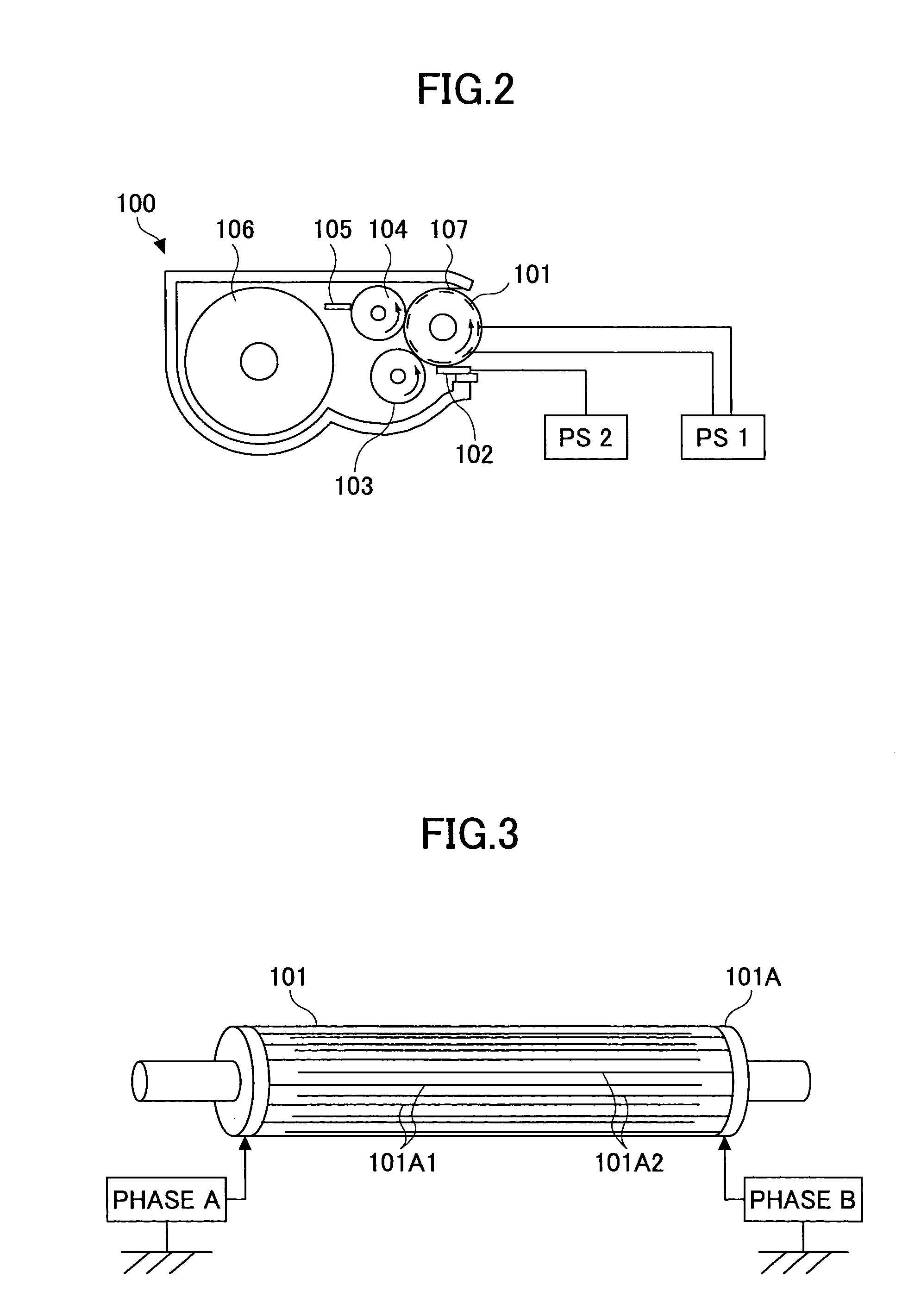Developing apparatus, image forming apparatus, and process cartridge
a technology of development apparatus and development cartridge, applied in the field of development cartridge, can solve the problems of difficult development of suitable material for magnets with increased magnetic force, deficiency of image, and potential damage of attached particles to latent image carriers, and achieve the effect of constant surface potential
- Summary
- Abstract
- Description
- Claims
- Application Information
AI Technical Summary
Benefits of technology
Problems solved by technology
Method used
Image
Examples
example 1
[0110]In Example 1, a developing unit shown in FIG. 10 was used.
[0111]A toner contained in a toner container portion of the developing unit 100 is conveyed by a stirring paddle 106 to a supply roller 103. By rotating the supply roller 103 in a direction opposite to the rotation of a flare roller 101, the supply roller 103 also functions as a collection roller. The supply / collection functions may be independently provided, as in the example shown in FIG. 2.
[0112]As the toner is supplied to the flare roller 101, the toner is triboelectrically charged. The toner is then conveyed as the flare roller 101 rotates, while the amount of toner that becomes attached to the flare roller 101 is regulated by a toner layer thickness regulating member 102, which in the example shown consists of an electrically conductive rubber blade. In another embodiment, the regulating member 102 may be in the form of a roller.
[0113]The limited amount of the toner is uniformly rearranged while it hops over the f...
example 2
[0124]In Example 2, a rectangular wave shown in FIG. 6A was used as the drive waveform for causing the toner to hop.
[0125]The rectangular wave for one phase had an average value V0 of −300 V, frequency f of 1 kHz, and a peak-to-peak voltage Vpp of 600 V. The bias for the other phase had a DC bias V0 of −300 V. Thus, a constant voltage was applied to one phase of electrodes, and the rectangular wave voltage was applied to the other phase of electrodes. In this case, too, it was possible to cause the toner to hop.
[0126]By thus using a DC bias as one of the biases applied to the flare roller 101, the number of power supply systems for producing pulses can be reduced by one, so that a power supply cost reduction can be achieved.
[0127]To the toner layer thickness regulating member 102, the DC bias of V0 was applied.
[0128]Thus, by equalizing the potential of the bias applied to the toner layer thickness regulating member and the average value of the biases applied to the flare roller 101,...
example 3
[0129]In Example 3, as the drive waveforms for causing the toner to hop, the rectangular waves shown in FIG. 6B were used. Specifically, the rectangular waves of opposite phases with an average value V0 of −300 V, frequency f of 1 kHz, and a peak-to-peak voltage Vpp of 300 V, were applied.
[0130]To the toner layer thickness regulating member 102, a rectangular wave bias with an average value V0 of −300 V, frequency f2 of 500 Hz, and a peak-to-peak voltage V2 of 400 V was applied.
[0131]Under these conditions, when the flare roller 101 was continuously rotated, a constant cloud potential was obtained. Thus, good image formation was conducted without image density irregularities.
PUM
 Login to View More
Login to View More Abstract
Description
Claims
Application Information
 Login to View More
Login to View More - R&D
- Intellectual Property
- Life Sciences
- Materials
- Tech Scout
- Unparalleled Data Quality
- Higher Quality Content
- 60% Fewer Hallucinations
Browse by: Latest US Patents, China's latest patents, Technical Efficacy Thesaurus, Application Domain, Technology Topic, Popular Technical Reports.
© 2025 PatSnap. All rights reserved.Legal|Privacy policy|Modern Slavery Act Transparency Statement|Sitemap|About US| Contact US: help@patsnap.com



